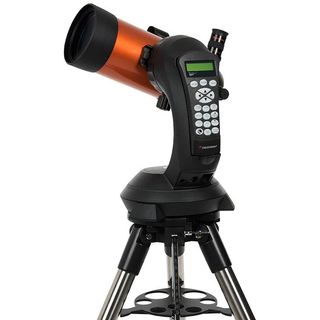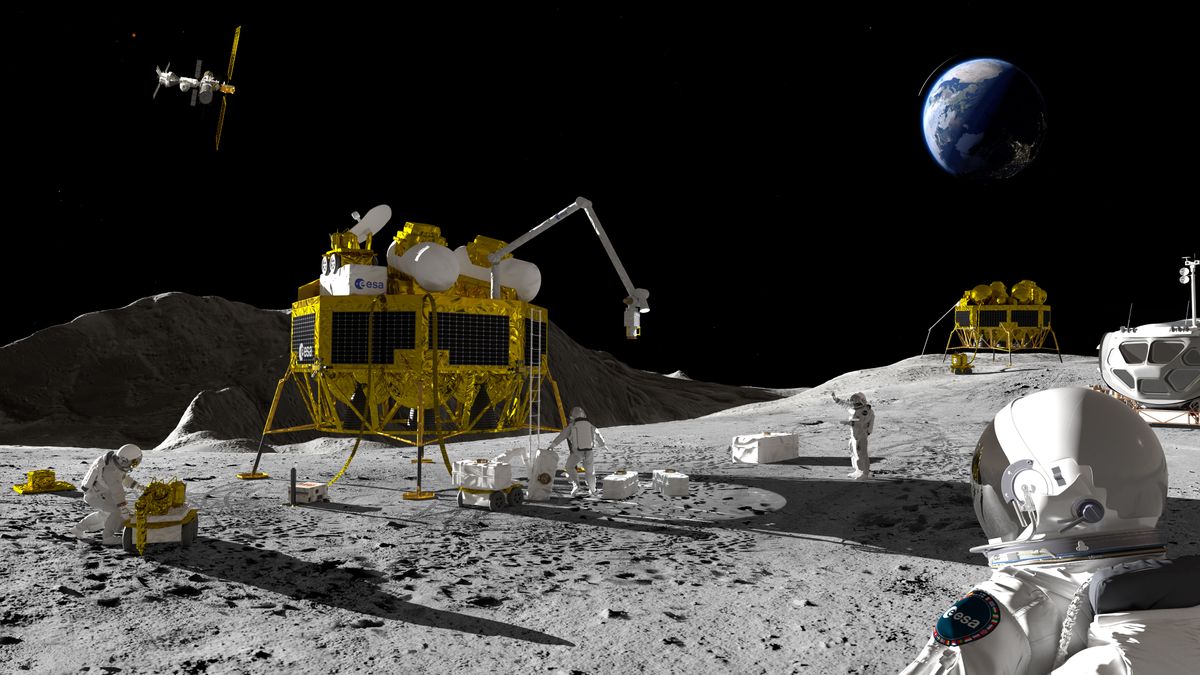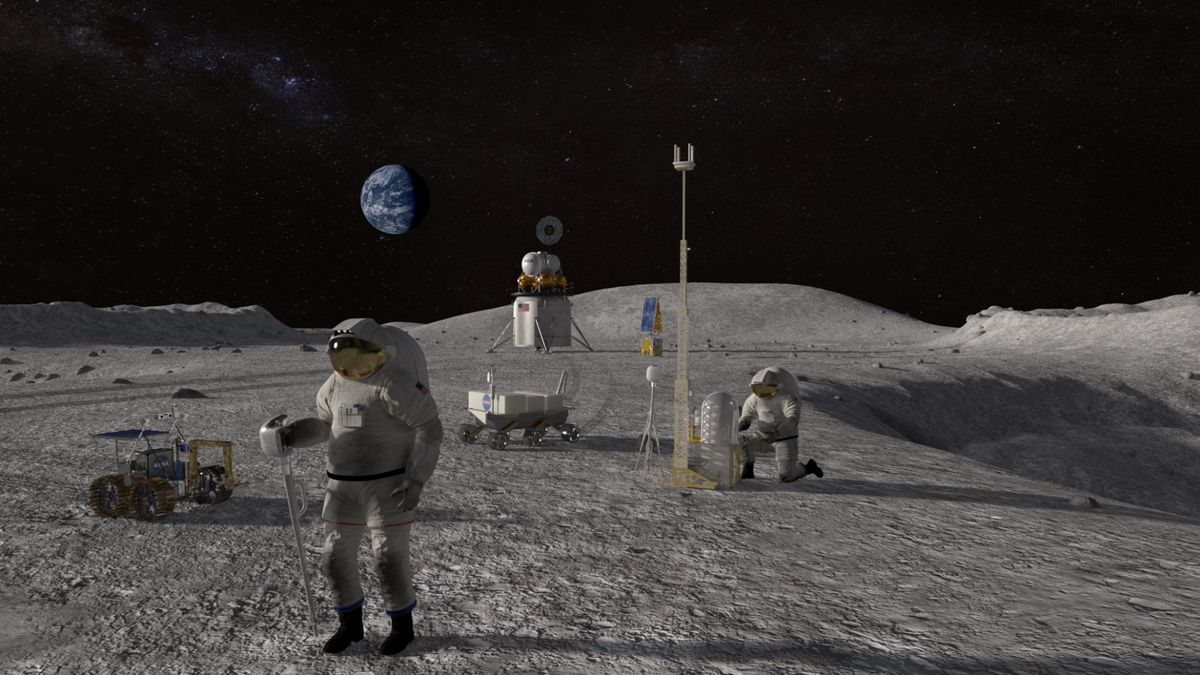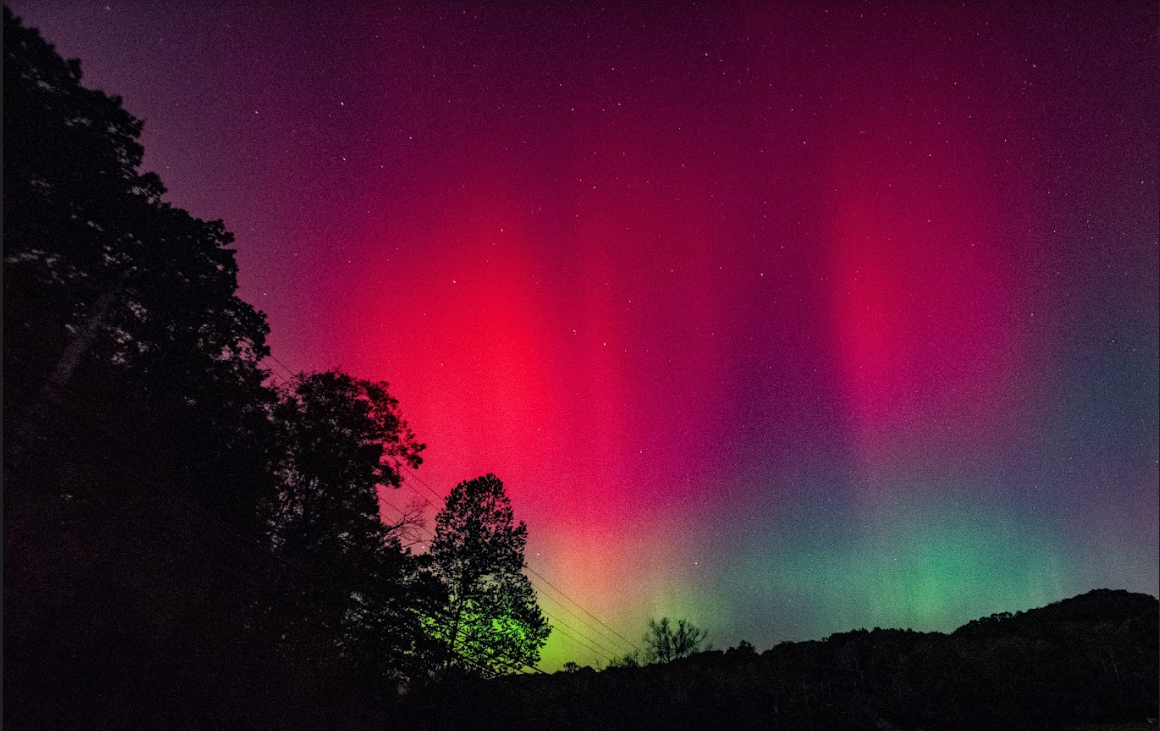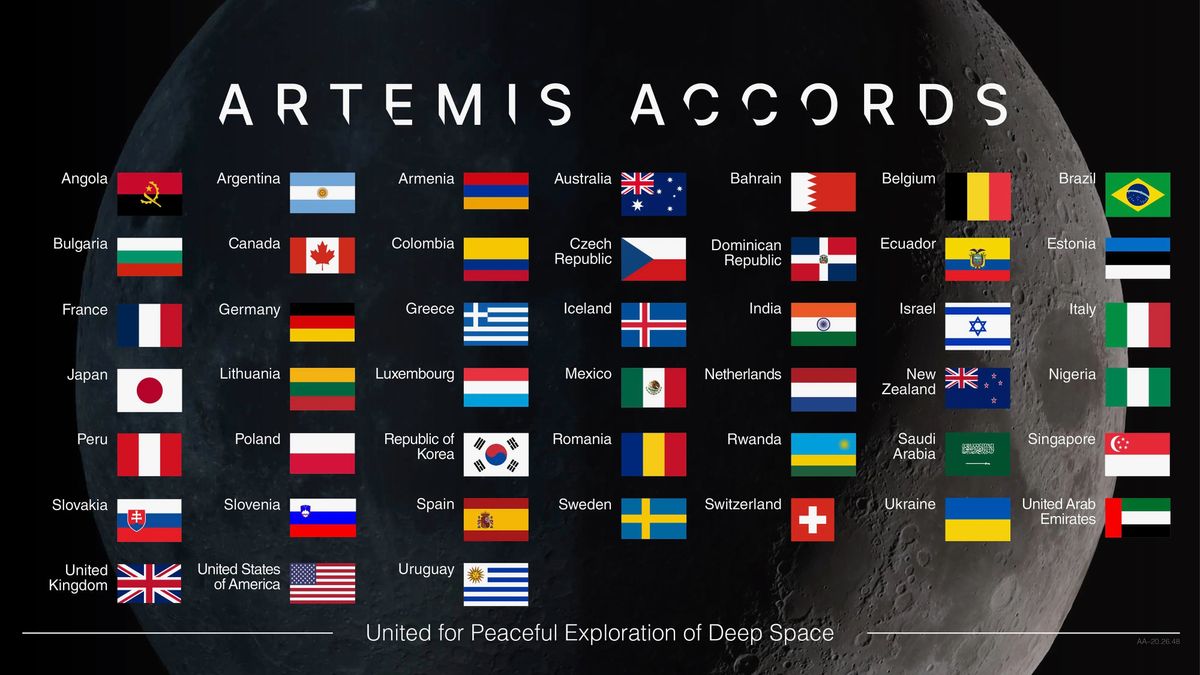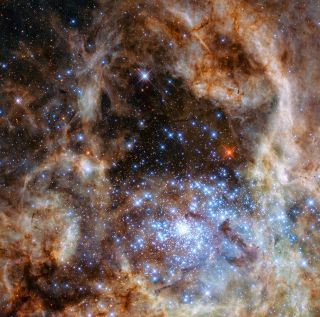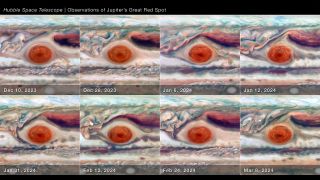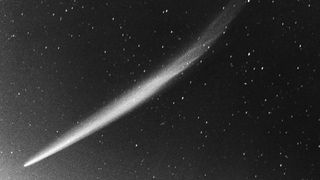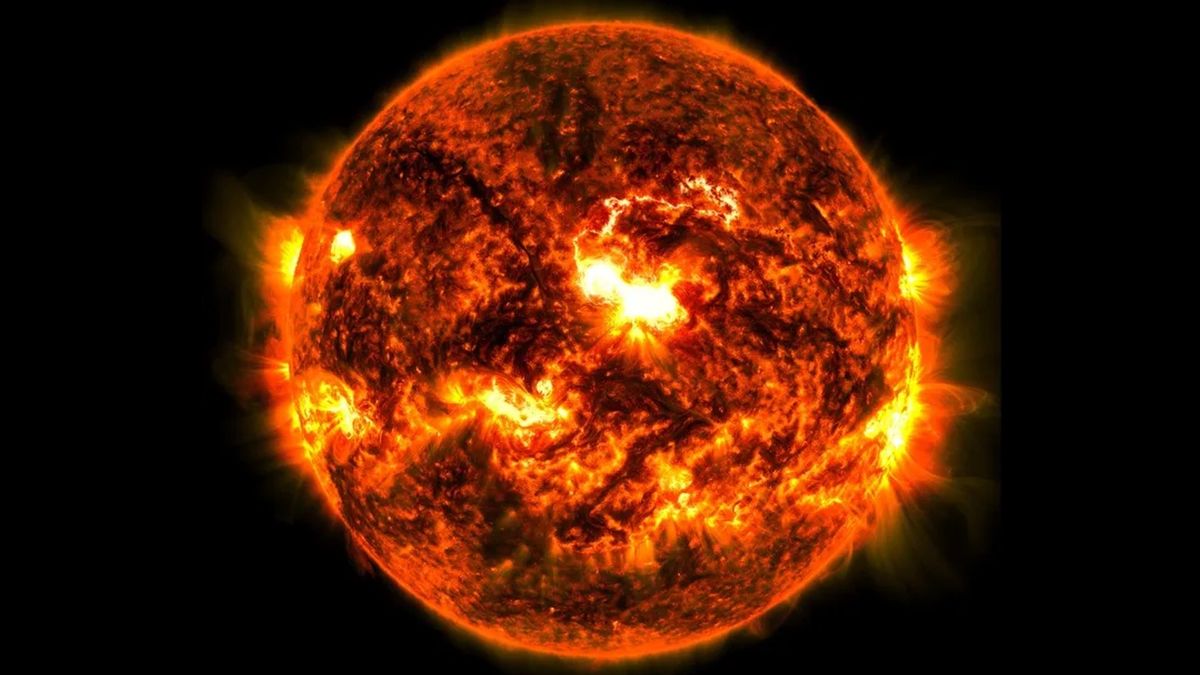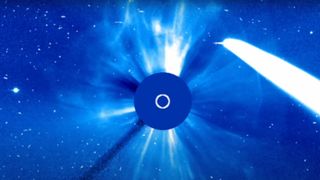Have you seen comet Tsuchinshan-ATLAS yet? If you’ve not been able to glimpse the bright, icy space rock that’s traveled from the edge of the solar system, it’s not too late. But you need to see it soon. The coma and long tail of comet Tsuchinshan-ATLAS, also called C/2023 A3 (Tsuchinshan–ATLAS), is currently shining at magnitude +0.5. That’s well within the grasp of the human eye. It’s likely now past its best, but only just, and will likely remain a naked-eye object after sunset in the west until, and possibly…
Read MoreTag: The Universe
Europe launches ambitious ‘Moonlight’ program to support lunar exploration
MILAN — The European Space Agency (ESA) is building infrastructure to support lunar exploration. ESA officially launched the Moonlight Lunar Communications and Navigation Services (LCNS) program here at the International Astronautical Congress on Tuesday (Oct. 15), with the aim of providing services for the more than 400 moon missions planned by space agencies and private companies over the next two decades. Moonlight will be a constellation of five lunar satellites, which together will enable precise, autonomous landings and surface mobility, according to ESA, while facilitating high-speed communication and data transfer…
Read MoreUS and China will need to discuss moon mission plans, NASA chief predicts
MILAN — NASA and China will need to discuss exchanges of data and mission plans as the two sides move to build sustainable presences on the moon, according to the NASA administrator. NASA chief Bill Nelson met with the press at the 75th International Astronautical Congress (IAC) here on Tuesday (Oct. 15), addressing questions related to the agency’s Artemis program. Both NASA, with Artemis, and China, with its International Lunar Research Station (ILRS), are working to get astronauts to the moon and to build lunar infrastructure to support repeated and…
Read MoreSolar Cycle 25 is still in max phase, so more aurora-boosting sun storms could be coming
You could get more opportunities to see supercharged auroras over the next few months, thanks to our very active sun. Solar activity waxes and wanes on an 11-year cycle. The current cycle, known as Solar Cycle 25, began in December 2019 and is still in its maximum phase, experts say. “Currently, we’re about two years into the maximum period, so we’re anticipating another year or so of maximum phase before we really enter the declining phase, which will lead us back to solar minimum,” Lisa Upton, co-chair of the Solar…
Read MoreEstonia joins Artemis Accords as moon-exploration coalition agrees to continue outreach efforts
MILAN — The nations signed up to the Artemis Accords are looking to spread the word on common principles and best practices on exploring outer space. Estonia became the 45th country to sign up to the Accords just ahead of the International Astronautical Congress (IAC) here, which opened on Monday (Oct. 14). But engagement and enlargement efforts won’t stop there. The Artemis Accords — a set of statements that set out common principles, guidelines and best practices for exploration of the moon and beyond — had its third heads-of-agencies meeting…
Read MoreGaia space telescope discovers 55 ‘runaway’ careening away from stellar cluster at 80 times the speed of sound
Using Europe’s Gaia space telescope, astronomers have identified 55 runaway stars being ejected at high speeds from a densely packed young cluster in the Large Magellanic Cloud (LMC), a satellite galaxy of our own Milky Way. This is the first time so many stars have been seen escaping from a single star cluster. The star cluster R136, located around 158,000 light-years away, is home to hundreds of thousands of stars and sits in a massive region of intense star formation in the LMC. It’s home to some of the biggest…
Read MoreJupiter’s Great Red Spot is being squeezed, Hubble Telescope finds — and nobody knows why (video)
The venerable Hubble Space Telescope has watched Jupiter’s Great Red Spot (GRS) oscillating, as though it were being squeezed in and out roughly every 90 days. Why this huge anticyclone, which has been shrinking over the decades and currently measures about 9,165 miles (14,750 kilometers) across (although astrophotographer Damian Peach has reportedly measured it to be just 7,770 miles, or 12,500 km, wide), is behaving in such fashion is a mystery. “With Hubble’s high resolution, we can say that the GRS is definitely squeezing in and out at the same…
Read MoreHopes dim for another bright October comet after Tsuchinshan-ATLAS
While skywatchers around the world have been raving about the performance of Comet Tsuchinshan-ATLAS, there has been talk on social media of yet another spectacular comet due to make its appearance at the end of this month. The lineage of this second object apparently connects it with a family of comets, some of which have been among the most brilliant ever observed. For this reason, some might have already branded it as “The Great Halloween Comet.” Unfortunately, it now appears likely that this will not happen. We’ll get into…
Read MoreSevere solar storm could supercharge auroras across US, impact power grids, NOAA warns
Get ready, aurora chasers: There’s a good chance you’ll be able to catch a nice light show by the end of the week! Forecasters with the U.S. National Oceanic and Atmospheric Administration (NOAA)’s Space Weather Prediction Center (SWPC) are highlighting the potential for a severe geomagnetic storm on Thursday (Oct. 10) and Friday (Oct. 11). That storm is likely to be in the G4 class — the second-highest level on the SWPC’s geomagnetic storm scale, which takes into account both severity and potential impacts. Indeed, the SWPC has issued a…
Read MoreComet Tsuchinshan-ATLAS photobombs SOHO spacecraft during powerful solar flare (video)
Nothing makes a photo more interesting than an unexpected guest appearing in the background. And how cool would it be if the photobomber were a comet? That’s exactly what happened to the sun-studying Solar and Heliospheric Observatory (SOHO) spacecraft, a joint effort of the European Space Agency (ESA) and NASA, beginning on Oct. 7. Typically, scientists use the view from SOHO’s Large Angle Spectrometric Coronagraph (LASCO) instrument to monitor the sun’s activity and determine if a coronal mass ejection (CME) accompanies a solar flare from active sunspot regions. Coronographs block…
Read More